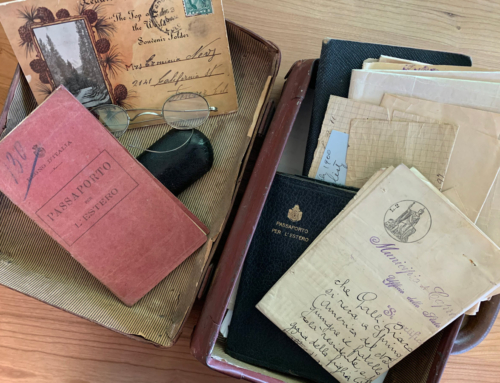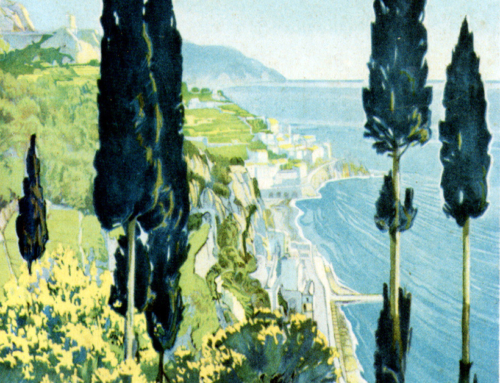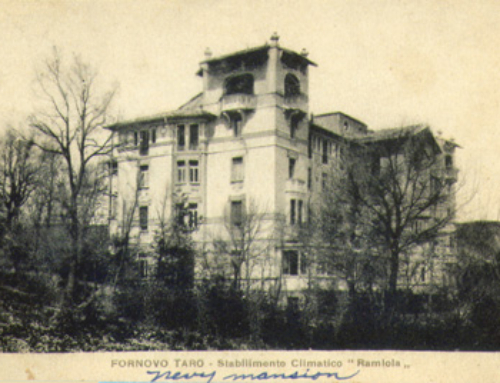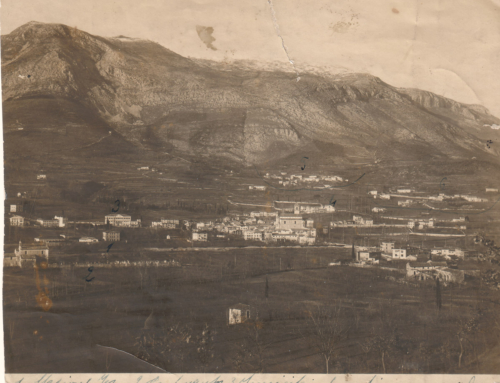Introduction comments from Massimo Nevi:
In this document there is much history, but also a lot of information about Nevi family. About history, it is all true. There is a right description of places, kings, names. city of Parma and so on. About others things, I could not check. But I read that the source of informations came also from a book of the count Guelfi Camajani, who works in the italian istitute that who gave me those informations. I don’t have news about Nevi in Spain, but maybe they changed the surname like you. In the document the origin of the household is in Milano in 14 century. In this there is a difference with my document. But my document speak of Genova in 1157, than is possible that the first Nevi moved to Milano. You have to know that Visconti family, who dominated Milano in 14th century, checked the land of Genova, Liguria, before. So It can be possible that Nevi’s moved in that state. Visconti family “bought” Parma in 1354. They paid it 70.000 gold fiorini. Milano and Parma was in the same state dominated from Visconti for a long time.
Historical Statement About the Noble Household “Nevi” from Parma
It is general opinion of the writers that, though the family-names started by the beginning of the 9th century, they were given to the families only in the 10th, 11th 12th and 13th centuries.
The Arabians were the first to use them, then came the Spaniards, then the French, and last of all the Italians. Many writers spent a large time and had a hard work in treating this matter, which is a very important one in History, and all of them agree about the fact that the family-names took their origin:
- from the place where the family had its estate, which was hand down to the posterity;
- from the country or province where they came from;
- from the first name of some ancestor;
- from dignity or profession of someone of the family;
- from the nick-names given to the people;
- from the possession of a tower, a church, a tower- bell, or more simply from the fact of living near one of these buildings;
- from the moral of physical qualities of a person or from any accidental event.
As we told before some families took their names from the professions and, though these professions were no longer carried on, the name stood unchanged. Here are some examples: Avvogadri ( a name which is found in all Italian cities and which took its origin from being someone of the family lawyers of the Church); the same can be told for Confalonieri, Capitani, Cattanei, and so on.
Learned Muratori agrees with the others about the derivation of these family-names and he too thinks that many of them took their name from the art or profession of someone of the family.
Adami, Adamoni and Adamoli, though differently called recognize the same origin.
The same can be told of the family we are speaking about: Nava, Neve and Nevi.
We think that Nevi Household had its origin in Milano. Maybe in the beginning the name was Nava and it changed in the actual “Nevi” owing to the dialect of the place where this family largely prospered.
News can be found since the 14th century.GIUSEPPE, son of MATTIOLO was one among those who gave oath of faithfulness to Gio. Maria Visconti, while his nephew MARCOLO was a member of the General Counsel on the City of Milano.
TOMMASO, jurisconsult of the 60 decurions in 1716, provicar of the Bank of Sant’Ambrogio was the husband of Virginia Casati , the last one of her branch, so that this household share of wealth, which was not subject to the feofff bond, came to the NAVA family. When Virginia Casati became a widow, she was still very young. She received by the Emperor Carlo VI (with a privilege dated November 24th 1723) for the eldest sons, the title of Count to be relied upon the Fief of Brianzola, bought from the Regia Camera with contract dated May 9th 1732 sig. Filippo Delmati, Cameral notary.
Their son AMBEROGIO, Conservative of the City estate , married the daughter of Marquis Giovanni Battista Piantanida, Caterina by whom he had some children. Among them: TOMMASO, TERESA (who married the Collegiate jurisconsulate Antonia de Capitani d’Arzgo, Senator ), and VIRGINIA born in 1764 and dead in 1824, wife of the Marquis Gerolamo d’Adda .
The abovementioned TOMMASO was made a Count by the Kingdom Of Italy by Napoleon I with privilege dated September 18th 1811.
From Angela Parravicino, daughter of Marquis Antonio, he had GIOVANNI, who married Maria Meraviglia Mantegazza, daughter of Marquis Luigi Alberto . They had AMBROGIO, who was a Knight of Malta.
The foundation of the Order of Malta comes from the 11th century. We know that some merchants of Amalfi got by the Caliph of Egypt the grant of a land situated in the Christian quarter of Jerusalem, where they built a Church, a Monastery for religious people and some hotels for pilgrims of their countries . This grant by the Egyptian Caliph took place a little before 1070, when the Egyptian power in Syria fell. This is confirmed by Anonimo Ughelli, who says that Giovanni Archbishop of Amalfi, having come for a pilgrimage to Jerusalem was received by the Amalfitani, who had built a few years before some hospitals to receive women and men.
In the origin the purpose of the Order was to give assistance to the poor infirms and only under the Great Mastery of Raymondo de Puy (Second Great Master) it became a military one . The purposes of the order became subsequently two: the assistance to the poor infirms and the struggle against the Infidels, and such they remained until the loss of the Isle of Malta.
The Order had its Navy. Besides Rodi the Islands of alchi, Limona, Simi, Piscopi, Nisiro, and many others were occupied.
The Harbours of Spain, particularly Barcellona and Magalona, Marsiglia, Genevo, Amalfi, Pisa, Brindisi and Messina in Italy, saw among the mercantile ships the quick galleys, and they saw tradesmen, hard Crusader Warriors and dreaming poets enticed by the mirage of Melisenda, leaving:
In vista alla spiaggia Asiana
risuona la nota canzone:
Amore di terra lontana
per Voi tutto il cuore mi duol.
In such a vernal renaissance of the Christian world the white-crossed standards appear for the first time on the striven sea.TOMMASO: he married Teresa Trecchi, daughter of Baron Giacomo, General Intendant of Finance, sister of Baron Sigismondo, well known for his elegance and anglomania, implicated in the political trials of 1821.
A collateral branch coming from Antonio, brother of Andrea , held of the count line, had the jurispatronage of the ancient parochial Church of San Vittore and GIOVANNI BATTISTA had it in Brianza, vicarage of Missaglia.
GABRIO MARIA, Bishop if Brescia, and FRANCESCO, the last of the Vicars of provision in 1796, belong to the overmentioned branch, which finished with the daughter of Capitano Don Niccolo, Maria, wife of Count Pietro Francesco Lurani. Garollo, in his Universal Biographic Dictionary, quotes AMBROGIO of Milano, architect and President of the Accademia di Brera, GAETANO, son of the guitarist ANTONIO MARIA, Professor of singing.
We find this family prospering in Parma in more modern times.
PI0 CARLO NEVI, born in Parma the 7th of May 1848, studied harmony in the Conservatorio and trombone in the School of Music of this City; besides he studied harmony and counterpoint in the Conservatorio of Milano. He succeeded the first in the contest for the role or solist in the Musical Corp of the Municipality of Milano. He was for several years the Vice-Director and later, having won a contest, Maestro and Director of the Scuola Municipale of Milano (Instrumental Section).
With the musical Corp of that city he gave successful concerts in Germany, Switzerland, France, and Spain. He composed marches, music for dance, serenades, a barcarola and he applied himself particularly to the transcription for band of some symphonies by Beethoven, of the Giulio Cesare by Schumann, of the soul by Bazzini, of the Sposa Venduta (The Sold Bride) by Smetana, and the Picturesque Scenes by Massenet. Parma has also beyond the confines of Europe enjoyed through the centuries, and still enjoys, an undiscussed renown of being a musical city.
In the arts also, Parma has a glorious and remarkable story. It starts in the Middle Age, when the free Common gave wise laws and prosperity to the citizens and when the Corporations flourish. ”Then – writes Testi – the Cathedral, palace and temple of the people, where along the magnificent proportions the artistic and civilian story almost entirely develops, rises.
The pointed arch decorated with terracotte and quick frames joints, while centuries go by, with the severe Lombard lines and with the smart balconies closing deep chapels where near the stern gothic burial, the polychrome tombs of the late renaissance profile themselves.
Near the still mediaeval paintings of the Chapels Benassi and Comane, Correggio creates wonderful frescoes gloriously crowning the Emilian conception, while his disciples flower the walls, the vaulted ceilings with insuperated magnificence and exuberant fancy. Thus in the Baptistery and in the Dome, wonderful Museums, we can follow the rising, the flowering and the declining or the Parmesan painting, and the short glorious apparition of the sculpture.”
In Parma painting, scripture and architecture are all imported.
The greatest artistical glory of Parma is resumed in the name of Antonio Allegri, called the Correggio from his native town.
When Parma was not yet the capital of the homonymous Dukedom, Princeps and Lords, who were travelling through the region, abode the Episcopio and here the Duke Ottavio Farnese settled his Court and power since the beginning of the Kingdom.
The cemetery of Parma is somewhat far from the city.
How wonderful this silent place is, with the smart porch surrounding lt! The coffin of mysterious Niccolo Paganini, the great violinist dead in Nice in 1840, is, in its classic style erected here.
The clergy of Parma refused the body to be buried in the enclosure of the cemetery and uttered an interdict against ”the man who was the Devil in person.”
Proceeding in our historical research, we see this noble household flowering also in the southern regions. Indeed a FRANCESCO was a General Receiver of the Provinces on this side the Faro in Reggio Calabria, in Reggio. (In the Provinces there are 13 General Receivers and about 1000 ”postieri” or so-called “Prenditori” of Naples and Kingdom, who accomplish the reception of the bets. The “Postieri” who belong to the districts of Naples and Province of Terra di lavoro are depending upon the central).
GIUSEPPE was an Underintendant of the District of Monteleone in Calabria Anterione.
Don MARCELLO was a parish Counsellor of Public Beneficence in Calabria Anteriore.
The royal Commission of Beneficence was established with Royal Statute on the with 4th January 1831 to administrate, by means of special funds, the assistance which the provident hand of the Government gives to the inhabitants of the Capital and it depends upon the Ministry of the Presidence. It contributes to the help of hundreds families.
The commission is formed by a President and six members. All this happened under the Kingdom of Ferdinando II, King of the Kingdom or Two Sicilies in 1854.We can find traces of this household also in Spain.
GASPAR MARIA ALVAREZ, Count of Norona (1760-1816) of Castellon de la Plana (Valencia) was a Spanish poet and a soldier in Madrid.
LOUIS was he also a Spanish.
NEVI family has its shield as it follows: Broken off (a special shape of shield) in the first of gold to the eagle of black crowned on the same. In the second of black to the eagle of red crowned of the same.
Each figure or colour of a shield has a meaning. Eagle was the King of birds, friend of Jupiter, insignia, long ago, feared all over the world.
Nothing could contest to the Eagle the primacy over the figures of a shield. It was the symbol of Majesty, of Victory, the Strength and of King Power. As the legends says that an eagle appeared to Romolo, while he was founding Rome, the Romans took this animal as one of their insignias; the more when the Etruschi paid them homage of a sceptre surmounted with an eagle of ivory as a symbol of the sovereignity to which they subdued. The eagle became the real and only Roman insignia when Carlo abolished all the others. In the Middle-Age the eagle was particularly the emblem of the imperial dignity, when the Emperors, looking for the help of the small feudatories and proprietors of allodial lands against the great vassals, started to give them grant of titles and privileges.
For the Americans the eagle is the symbol of Liberty.
The Russians took it in their insignias pretending themselves the successors of the Bizantine Empire.
The eagle with the flight low symbolizes the rising wish of glory, the brightness of renown, to which Dante’s verse: Che sovra ogn’altro com’aquila vola seems to refer to.
Gold is the noblest of the two metals of the blazonry. It is the symbol of the sun, so that, by the English, the gold put in the arms of the Kings was called Sun and Topaze if it figured in those of Knights.
Some ancient heraldist countersigned this enamel by the Zodiacal symbol of the Sun.
Gold entering in the arms in quality of metal is very frequent country heraldry. Yellow, which represents it, has had the same meaning; it has anyhow also a special symbolism.
Black was put in the blazon by the Knights who were in mourning, or wanted to let know some affliction.
Thus the King of Sicily, after the unlucky war of the Kingdom of Naples, presented himself at the tournament called ”Dragon’s throat enterprise” in 1446 wearing black coats, black shield with silver tears and riding a black caparisoned horse. Indeed it was the heraldic use to change in mark of mourning some coat or figure of the arm into black, as it happened to the City of Arezzo, which in 1313 changed the silver horse of its shield into a black one for the death of the Emperor Henry VII.
The shield was the chief piece of the Knight’s armour because it brought his device and meant his enterprises by the symbolic figures which formed the blazon.
Bouton affirms that the “lambreèchini” coming down from the helm to the shield and forming a kind on pavilion, symbolize the tent where, during the tournaments, Princess and Ladies presided these chivalrous telting- matches. The tent was formed by precious arrases and decked with shields with their arms and those of the fighters.From this use it came that Emperors, Kings, Printeps and all those who had a right of sovereignity, covered their arms with a pavilion so that these had a form of greater dignity and better showed the degree or authority of their owners.
The King of Italy has in his large blazon a royal pavilion which has the wide royal mantle for tapestry, and has its summit in silver cloth embroidered in the upper hem with golden tongues of fire and in the lower with golden and red ones alternately and with a vary shaped valance flaps or blue velvet and golden tassels.
This pavilion is surmounted by the royal crown of Savoya (Royal Statute or the 1st or January l890).We are at the end of our historical research and we have seen that the members of NEVI household flourished in many regions of Italy and also in Spain. They wherever distinguished themselves for their unusual merits; owing to the result of this posterity a family-tree entangling the actual representatives of the family with the ancestors would be advisable.
A legal family-tree going back from generation to generation would give us a better possibility of having more precise informations about each single member.
The news forming this historic heraldic research have been taken from the following bibliography:
Crollalanza: Dizionario Blasonico
Garollo: Dizionario Biografico Universale
Archivio Storico Lombardo
Anfiteatro Romano
Elenco dei Cavalieri di Malta
G.Guelfi Camalanit: Dizlonarlo Araldico
G. Crollalanza: La Symbolica
Elenco Ufficiale della Nobilta Italiana Almanacco Reale belle Due Sicilia
Transcribers notes: I have maintained typographical, spelling and grammatical errors. The only handwritten notes on the 5 typed pages is on the upper right hand corner of page 1: RIVOSECCHO LIGURE
–Barbara O. Adolfson October 7, 2002






